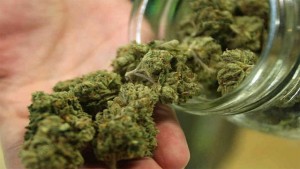 Canada’s statistical agency said Tuesday it will start tracking the economic impact of recreational use of cannabis before it is legalised next year, but highlighted challenges of measuring black market transactions.
Canada’s statistical agency said Tuesday it will start tracking the economic impact of recreational use of cannabis before it is legalised next year, but highlighted challenges of measuring black market transactions.
The value of the production, importation and consumption of cannabis in Canada – which will remain illegal except for medical use until June 30, 2018 – is not currently included in the country’s gross domestic product (GDP).
“There is no debate that non-medical cannabis is produced in Canada” and “even though this activity is illegal, it is still ‘economic output'” that should be included in Canada’s GDP in accordance with international standards, Statistics Canada said in the report.
Some countries, notably in Europe, have for several years included estimates of illegal activity in their national accounts estimates, the agency noted.
“It is time for Canada’s gross domestic product to include the activity,” it concluded, while also pointing out the limited amount of data currently available prior to the legalisation of cannabis.
Outlining a framework for capturing cannabis-related activity, Statistics Canada said it would use data from health surveys collected over the last 50 years as a starting point for cannabis consumption.
This includes estimates of the number of Canadians that have used recreational cannabis and their frequency, which would then be multiplied by the black market price per gram to measure total household consumption “in the cannabis economic account.”
The methodology is similar to that used by the parliamentary budget office to estimate illegal cannabis consumption.
In an example, it said that if one million Canadians consumed about one gram of cannabis daily, multiplied by an assumed Can$8 per gram, total household expenditures on cannabis for the year would be almost Can$3 billion (RM9.5 billion).
The agency would add to this estimates on the production, import and export of cannabis based in part on statistics on raids of grow houses and drug seizures.
“While the estimates cannot be considered precise, they will provide users with lower and upper bounds between which the cannabis ‘sub-economy’ can be placed within the context of the overall Canadian economy,” said Statistics Canada.
